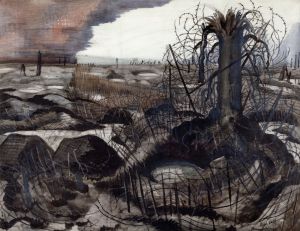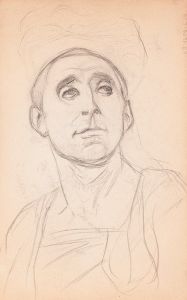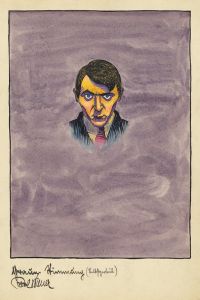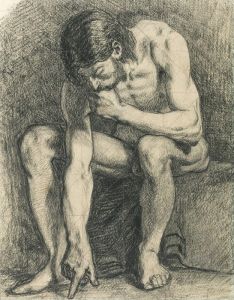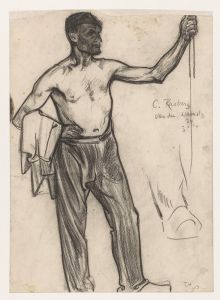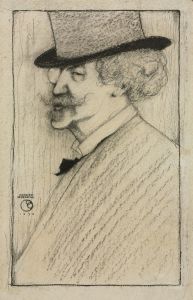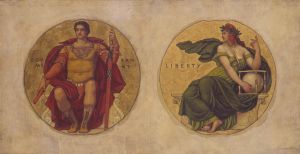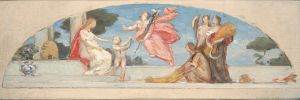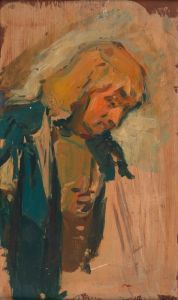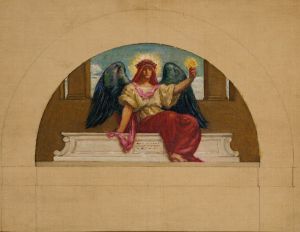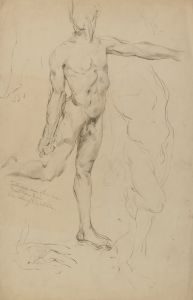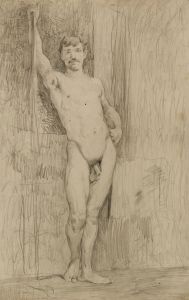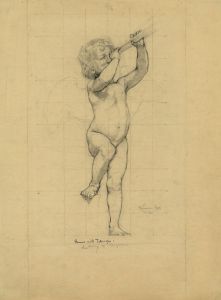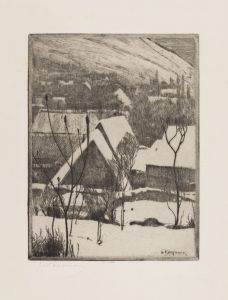
Sketch
A hand-painted replica of Kenyon Cox’s masterpiece Sketch, meticulously crafted by professional artists to capture the true essence of the original. Each piece is created with museum-quality canvas and rare mineral pigments, carefully painted by experienced artists with delicate brushstrokes and rich, layered colors to perfectly recreate the texture of the original artwork. Unlike machine-printed reproductions, this hand-painted version brings the painting to life, infused with the artist’s emotions and skill in every stroke. Whether for personal collection or home decoration, it instantly elevates the artistic atmosphere of any space.
Kenyon Cox (1856–1919) was an American painter, illustrator, muralist, writer, and teacher, known for his academic style and significant contributions to American art in the late 19th and early 20th centuries. While Cox is recognized for his murals and larger works, sketches by Kenyon Cox also hold an important place in understanding his artistic process and style.
Kenyon Cox was born in Warren, Ohio, and showed an early interest in art. He studied at the Pennsylvania Academy of the Fine Arts and later at the École des Beaux-Arts in Paris, where he was influenced by the French academic tradition. This training is evident in his meticulous approach to drawing and composition, which can be seen in his sketches.
Cox's sketches often served as preparatory studies for his larger works, including murals and paintings. These sketches reveal his attention to detail, his understanding of human anatomy, and his ability to capture the essence of his subjects with minimal lines. His sketches were not only a means of planning his compositions but also a way to explore different poses, lighting, and arrangements before committing to the final work.
One of the notable aspects of Cox's sketches is their classical influence. He was deeply inspired by Renaissance and classical art, which is reflected in the idealized forms and balanced compositions of his sketches. This classical approach was part of a broader movement in American art at the time, which sought to align American artistic production with European traditions.
Cox was also a prominent teacher and writer, and his thoughts on art and technique were influential in shaping the next generation of American artists. His sketches often served as teaching tools, illustrating his principles of design, proportion, and the importance of drawing from life. He emphasized the need for artists to have a strong foundation in drawing, which he believed was essential for any successful work of art.
In addition to his role as an educator, Cox was a prolific writer on art. He contributed essays and critiques to various publications, where he articulated his views on art, aesthetics, and the role of the artist in society. His writings often echoed the disciplined approach seen in his sketches, advocating for a return to traditional techniques and values in art.
While specific sketches by Kenyon Cox may not be as widely recognized as his finished paintings or murals, they are invaluable for understanding his artistic philosophy and methodology. These sketches provide insight into his creative process and his commitment to the principles of academic art. They also highlight his skill as a draftsman and his ability to convey complex ideas through simple, yet precise, lines.
Overall, Kenyon Cox's sketches are a testament to his dedication to the craft of drawing and his influence on American art during a period of significant change and development. They continue to be studied and appreciated for their technical excellence and their role in the broader context of Cox's artistic legacy.





